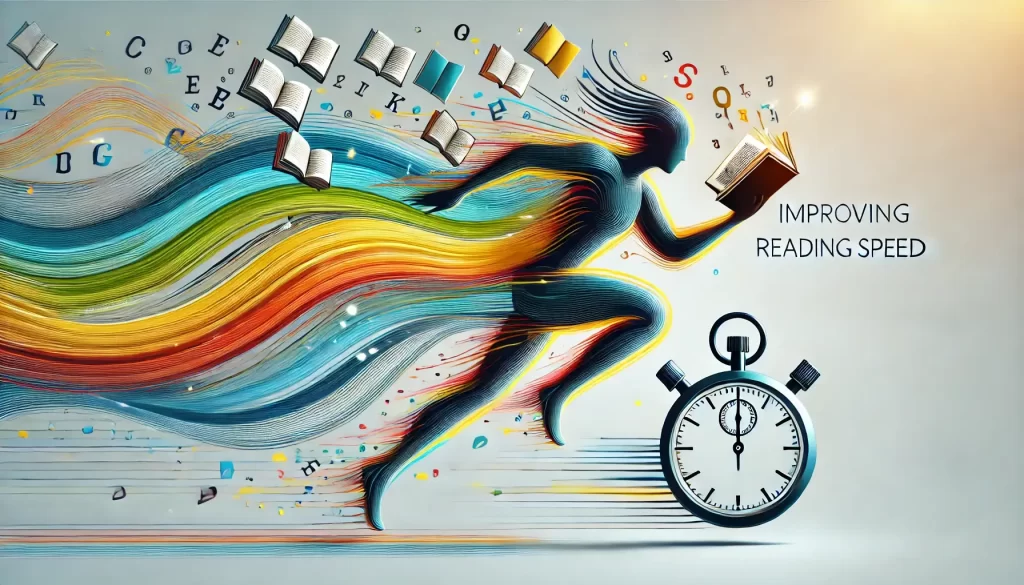In our rapidly changing world, enhancing your reading speed is vital for staying engaged and knowledgeable. Whether you’re a student, a working professional, or simply someone who enjoys reading, being able to read more quickly can help you save time and improve your learning experience.
Speed reading isn’t merely about hurrying through material; it’s about balancing speed and understanding. By implementing effective strategies, you can take in information more effectively and adjust your reading style to meet your objectives.
There are numerous techniques available, from skimming methods to exercises that improve concentration, all aimed at increasing your reading speed. In this article, we will delve into practical advice to help you read more swiftly while still grasping the content.
With the right techniques, you can make reading a more enjoyable and fulfilling activity. So, let’s dive in!
10 Effective Techniques to Boost Reading Speed
1. Stop Your Inner Voice
The voice inside your head that follows exactly what you read whenever you read is called subvocalization. People who want to speed read find this as their enemy. Even when we would like to increase our reading speed though not significantly much as speed reading, we would want to eliminate or at least reduce the inner voice actions.
This is not something wrong because that is how we learned to read when we were children. The practice stuck on to us. There are many ways to get rid of this practice. We have already talked about them in our article
2. Word–Chunking
It is not that we read a bunch of words usually. Our brain takes a few milliseconds to jump from one word to the next. Though this cannot be rectified, we can train our brains to read chunks of words together to read faster than the average rate.
This might be a bit tough in the beginning since we may feel like nothing we read is actually getting into our heads. But with practice, this will get better. So do not try this at first with books from which you are hoping to learn something of very serious concern.
Start with novels or short stories. Because one thing is we need not remember every word to understand the storyline. Secondly, we may not forget an interesting part of the story even if we have struggled to read that part trying to read a bunch of words together.
3. Do Not Backread Words
We tend to do this consciously or unconsciously. And this is completely dependent on our comprehension rate. It is not just enough to read we also want to comprehend and remember what we actually read. For this, our brains tend to reread the words front and back at least a couple of times.
The brain does this to form a connection between the string of words that you are reading. Only then it can remember what you have read. Sometimes, our vocabulary might be a problem. Our brain would want to read a word twice to find and remember the meaning of the word.
In some cases, we try to put in a meaning for the word ourselves that fits the outcome of the sentence. This takes up a significant amount of time, to be honest. Avoiding this can increase your reading speed.
4. Set a Timer
This is a very efficient method but it needs to be executed a bit consciously. Tracking the time of what you are reading is very helpful if it doesn’t rush you to just read rather than comprehend what you read.
People tend to try this method and get diverted from its actual purpose of it. Reading involves effective comprehension. So set a timer that helps you focus on the rate as well as the content of what you are reading.
5. Keep a Target
This is similar to setting a timer, but not rushing the goal. When you have decided to go with this technique, you mustn’t set an impossible goal. It’s not like you could read a whole book in a day.
Setting such a reading goal would unnecessarily make you anxious about reaching the target. This might lead to you getting frustrated about what you are reading or getting demotivated to read itself.
6. Read More, Practice More
The brain is nothing but a muscle. The more you train it, the more efficient it will be. Reading is not a one-time action. It is a consistent process. Reading a part of a book on a fine day and getting to the next chapter of the book a month later is definitely not a healthy practice.
Even if you are not able to reach your daily targets or at least a chapter every day, read a page. Read a few paragraphs. This will keep your brain muscles familiar with as well as interested in the practice of reading. Eventually, you will see a difference in your reading speed.
7. Point and Read
This is actually a speed-reading technique. Keeping a pencil or a line tool or at least your finger can help you focus more on the word that you are currently reading without getting back to the previous words. This also keeps you from getting distracted.
Your brain would be conscious enough that you are involved in a specific activity and would put some effort into it to keep you engaged in it. Eliminating distractions and backreading is the result of this method, which directly impacts your reading speed.
8. Vocabulary vs Your Reading Speed
Lack of vocabulary is one of the major reasons for reading at an average speed. As already discussed above, this may result in spending some handful of time out of your reading session and extra efforts to search for the meaning of the unknown words, trying to comprehend it, and finally fitting it into the content that you are reading.
On one side, we are indeed learning new words here and there whenever we read something, but if you have already learned some words by any chance, this would eliminate the time you spend on it amidst your reading session.
9. Skim It, Scan It, Read It
Skimming and scanning are important parts of the reading process. Whatever content or book or anything that you pick up for reading, skim and scan it first.
This helps for the better grasping of the content and actually understanding what it is going to talk about.
We have already talked about how to skim and scan in the following article.
10. Find Your Purpose
Reading alongside a pointer or your finger, setting a timer, and setting a goal, might help only if you are clear with the purpose of your reading.
Just reading off anything you get in hand without actually finding if it’s gonna be of any worth to you is a bit useless, to be honest. You need to define your purpose for reading.
Conclusion
Enhancing your reading speed is an exciting journey that involves practice, patience, and effective techniques. By adopting strategies such as reducing subvocalization, utilizing a pointer, and broadening your peripheral vision, you can greatly improve your reading efficiency while still understanding the material.
Keep in mind that the aim is not just to read more quickly, but to make your reading experience more meaningful and enjoyable. Adjust your methods based on the type of content and context, whether you’re preparing for exams, working on projects, or diving into a good book.
As you implement these techniques, monitor your progress and take time to celebrate the small victories. With regular practice, you’ll not only save time but also gain a newfound confidence in processing written information.
Begin your journey today, and see how enhancing your reading speed can lead to countless opportunities for learning and personal development. Enjoy your reading adventure!
Don’t forget to checkout some of our top-ranked articles too:




